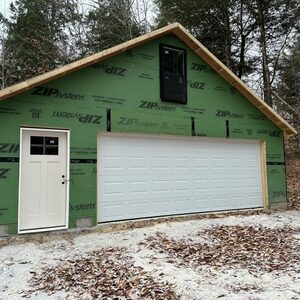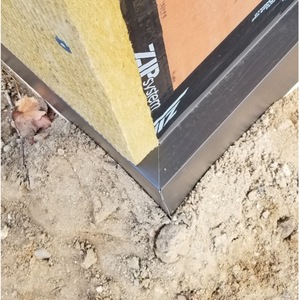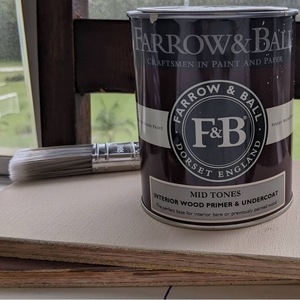
The dialogue on moisture mitigation in wood-frame walls has become fraught with confusion and controversy, in part because the answer to many questions about combining interior vapor retarders, water-resistive barriers, and various types of insulation is: it depends. What does it depend on? It depends on the climate—cold or hot, humid or dry, or a mix—and how we layer the various materials that become a wall. Tasked to write about one layer, the interior vapor retarder, and then to reduce this further to discuss only one material among the many interior vapor retarders available—paint—requires a caveat: I am providing information, not recommendations.
The controversy on interior vapor retarders
Interior vapor retarders, such as paint, polyethylene sheeting, and kraft paper, have formed part of most wall assemblies for decades. Changing wall construction practices, including energy-efficient insulation strategies, began to alter the moisture behavior of walls around 20 years ago. This change in wall behavior led to occasional problems with moisture trapped within cavities and prompted questions on the appropriate selection and layering of materials for effective moisture management.
Over the last week, I have combed the literature and read contradictory recommendations, especially about interior vapor retarders. As a general trend, the experts have become less enamored—and some outright hostile—toward interior vapor retarders, especially in warm climates, where air conditioning is used for much of the year. Some authors recommend eliminating interior vapor retarders to allow walls that absorb winter moisture to dry inward during warm weather as air-condition use rises. However, according to one expert that I spoke with, Jay Crandell, P.E., of Applied Residential Engineering Services, and former Director of the Structures & Materials Division at the NAHBRC, this attitude may be somewhat misguided.
Crandell says the industry focuses too much on the drying…
Weekly Newsletter
Get building science and energy efficiency advice, plus special offers, in your inbox.

This article is only available to GBA Prime Members
Sign up for a free trial and get instant access to this article as well as GBA’s complete library of premium articles and construction details.
Start Free TrialAlready a member? Log in














9 Comments
We're building a home in climate zone 4, which seems to have fewer vapor driven issues than colder or hotter climates. I have chemical sensitivities, and the brands of paint that I tolerate don't currently have any data available on their perm ratings. How critical is this in our climate? I was always assuming that two coats of paint would do the job, and didn't realize that some paints may have extremely high perm ratings.
Hi Debra,
Unfortunately, the answer on many questions surround vapor retarders "depends" on one more thing that Fernando didn't mention in the article: who you ask. I have talked with a lot of designers and builders of high-performance homes who could pretty much care less about vapor retarders and focus only on keeping rainwater out of the walls and impeccable air sealing, feeling that if they if they do those things well, vapor drive simply isn't an issue. Fortunately, you are in a pretty forgiving climate and a class I or class II interior vapor retarder is not required, at least not by the IRC. What paint are you thinking of using?
I'm in the process of deciding between Ecos and AFM paints.
Also, I was told by someone at AFM that I could just apply a layer of their new super thick wallboard primer on the ceiling, and not bother with applying regular paint there at all. That would save me time and money, but I'm not sure if that's a good idea if vapor drive would be much of an issue.
Hi Debra.
I couldn't find perm ratings for either of those companys' paints on their websites. I have an email in to Ecos. Hopefully, they'll provide some information. I will let you know if I hear from them.
Ecos has already told me that they don't have any perm ratings for their paints. I contacted AFM, but they never got back to me.
“[Deleted]”
Debra, my next installment is on green paint and I deal extensively with VOCs. You may find some useful information therein.
Thanks. I'll keep my eyes open for it.
Debra, you can find the green paint article by scrolling down. You will find certain information that speaks to your questions.
Log in or become a member to post a comment.
Sign up Log in